We use magnets in many ways in our day to day life. For example, to separate iron pieces from large pile of waste material, to stick favorite stickers on to doors of almirahs or refrigerators, in some pin holders, pencil boxes etc.
A shepherd named Magnes who lived in Ancient Greece, used to take his herd of sheep and goats to the nearby mountains for grazing. He would take a stick with him to control his herd. The stick had a small piece of iron attached at one end.
One day he had to pull hard to free his stick from a rock on the mountainside. That rock attracted the iron tip of the shepherd’s stick. This was the discovery of natural magnets. Such rocks were called magnetite after the name of the shepherd.
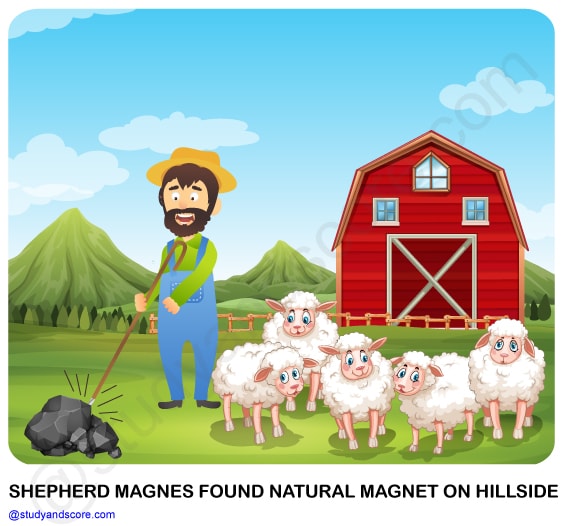
Magnetite contains iron. Some people also believe that magnetite was first discovered at a place called Magnesia. The substances having the property of attracting iron are now known as magnets.
Later on the process of making artificial magnets from pieces of iron was discovered. Nowadays artificial magnets are prepared in different shapes. For example Ring magnet, bar magnet, horse-shoe magnet, cylindrical or a ball ended magnet.
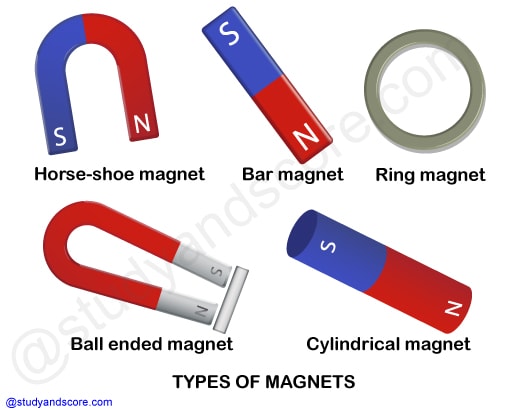
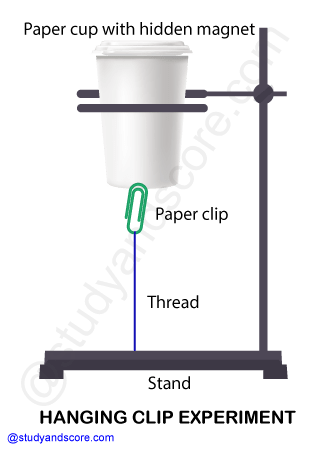
Magnet attracts certain materials whereas some do not get attracted towards magnet.
The materials which get attracted towards a magnet are magnetic materials. For example iron, nickel, cobalt etc.
The materials which are not attracted towards a magnet are non-magnetic materials. For example wood, plastic, paper etc.
Some kinds of sand or soil consist of small pieces of iron called as iron filings. When the magnet is rubbed in the sand, these particles get attached to the magnet. The amount of iron in the sand varies from location to location. Also some kinds of sand do not contain any iron material in it.
When a magnet is placed on the iron material like iron filings, nails or pins spread on a paper, the iron materials stick onto the magnet. We can observe that most of the iron material stick onto the two ends of the bar magnet. These ends are called as the poles of the magnet.
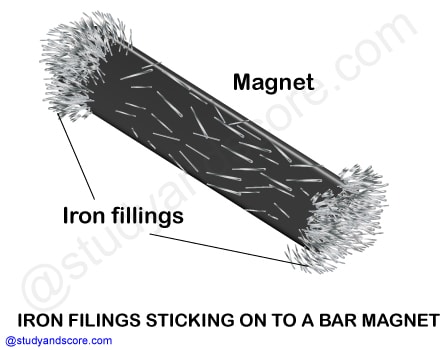
Magnet and its properties were known to people from ancient times. For instance, ancient Chinese emperor Hoang Ti had a chariot with a statue of a lady that could rotate in any direction. It had an extended arm as if it was showing the way. The statue had an interesting property. It would rest in such a position that its extended arm always pointed towards South. By looking at the extended arm of the statue, the Emperor was able to locate directions when he went to new places on his chariot. This is because a freely suspended bar magnet always comes to rest in a particular direction, which is North-south direction.
The end of the magnet that points towards North is called its North seeking end or the NORTH POLE of the magnet. The other end that points towards the South is called South seeking end or the SOUTH POLE of the magnet. All magnets have two poles whatever their shape may be. Usually, north (N) and south (S) poles are marked on the magnets.
This property of the magnet is very useful for us. For centuries, travellers have been making use of this property of magnets to find directions. It is said that in olden days, travellers used to find directions by suspending natural magnets with a thread, which they always carried with them.

Later on, a device was developed based on this property of magnets. It is known as the COMPASS. A compass is usually a small box with a glass cover on it. A magnetized needle is pivoted inside the box, which can rotate freely. The compass also has a dial with directions marked on it. The compass is kept at the place where we wish to know the directions. Its needle indicates the north-south direction when it comes to rest. The compass is then rotated until the north and south marked on the dial are at the two ends of the needle. To identify the north-pole of the magnetic needle, it is usually painted in a different color.
Take a rectangular piece of iron. Place it on the table. Now take a bar magnet and place one of its poles near one edge of the bar of iron. Without lifting the bar magnet, move it along the length of the iron bar till you reach the other end. Now, lift the magnet and bring the pole to the same point of the iron bar from which you began. Move the magnet again along the iron bar in the same direction as you did before. Repeat this process about 30-40 times. Bring a pin or some iron filings near the iron bar to check whether it has become a magnet. If not, continue the process for some more time. Remember that the pole of the magnet and the direction of its movement should not change. You can also use an iron nail, a needle or a blade and convert them into a magnet.
Take two small toy cars and label them A and B. Place a bar magnet on top of each car along its length and fix them with rubber bands.
In car A, keep the south pole of the magnet towards its front. Place the magnet in opposite direction in car B. Place the two cars close to one another. We can observe that both the cars are pulled towards each other. This is due to the attraction of the opposite poles of the magnet.
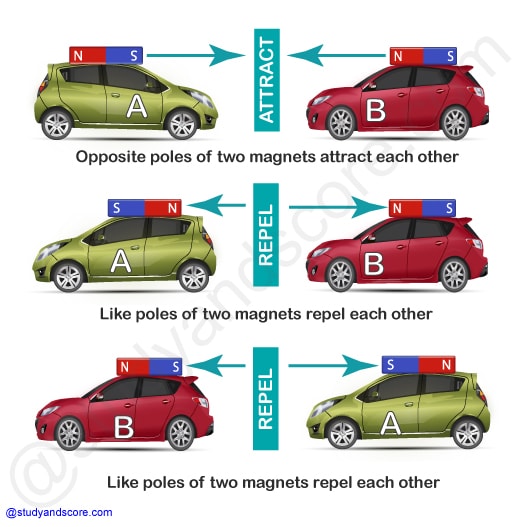
Then, place the toy cars close to each other such that the rear side of car A faces the front side of car B. As the car B approaches car A, Car A moves away. This is due to the repulsion of the like poles of the magnet.
Finally, place the car A behind car B. As the car A approaches car B, Car B moves away. This is again due to the repulsion of the like poles of the magnet.
Link to Solutions on this topic
- Share with your friends! -
Login to post your comment here...
- or with social Account -